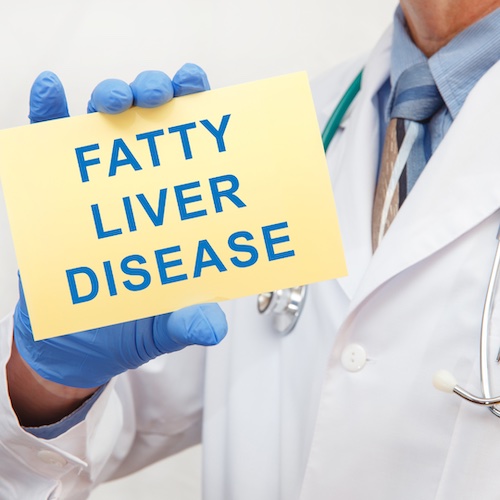Fatty liver is a condition in which fat accumulates in the liver. Usually, a small amount of fat is present in this organ, in normal conditions. When the fat percentage exceeds its normal limit, the condition of the fatty liver occurs.
This organ is known as Yakrut in ayurveda. It is the site of pitta dosha. According to the principles of Ayurveda, this condition occurs due to an imbalance of Kapha dosha, Vata dosha, Medha dhatu ( body fat ), rasa dhatu (lymph), and Rakta dhatu (blood).
Related Article
Ayurveda Liver Detox – An Easy Liver Cleansing Guide
Causes of fatty liver
Excess accumulation of fat in this organ occurs due to various causes. The following are the main reasons for the accumulation of fat.
Alcohol
Excess intake of alcohol is the main cause of this condition. Alcohol impairs metabolism and altered metabolism leads to the accumulation of fat in situ.
Obesity
Obesity is another major cause of this condition. Around 75% of obese people have excess fat accumulated in this vital organ. When a person consumes excessive amounts of calories, his/her liver fails to process these and the fat accumulates.
Diabetes
Both the liver and pancreas play a great role in controlling blood sugar levels. Due to an excess amount of fat deposition, this important organ loses its ability to control blood sugar levels. This puts pressure on the pancreas, which leads to an early onset of diabetes.
High Triglycerides
Increased consumption of fatty foods can lead to an excess amount of fat in the blood in form of triglycerides. Increased triglycerides lead to the accumulation of fat in the body including the liver.
Other than these some conditions like pregnancy, can also cause this condition. Genetics also plays a great role. Regular consumption of some medications may also cause this condition.
According to ayurveda excess consumption of fatty and high-caloric foods, not exercising (avyayama), sleeping in the daytime (diva swapa), laziness (alasya), etc impairs agni (body fire or metabolism). Impaired Agni, imbalances the important nourishing tissue rasa dhatu ( lymph). Rasa dhatu becomes heavy and increases medha dhatu which accumulates in the body and liver. Accumulated medha dhatu imbalances Kapha dosha and pitta dosha leading to this condition. When the proportion of imbalance is very high it vitiates Vata dosha causing inflammation, fibrosis, and cirrhosis.
Symptoms
This condition gets accidentally discovered during regular ultrasound check up. It is always advisable to get an ultrasound done to rule out this condition when you are obese or diabetic or have increased lipid levels. Usually, mild forms of this are non-symptomatic. But when this condition is untreated, it may lead to inflammation, fibrosis, and cirrhosis. The symptoms due to cirrhosis are as follows.
- Loss of appetite ( agnimandya)
- Nausea ( hrullasa)
- Weight loss ( ksheena)
- Pain in belly and fullness ( admana )
- Yellow discoloration of skin ( kamala )
- Swelling in legs (shotha)
- Weakness ( kshaya)
Inflammation, fibrosis, and cirrhosis occur when Vata dosha gets aggravated in the fatty liver. Ayurvedic practitioners opine that it is difficult to treat this condition when Vata dosha is involved. But this can be reversed before the involvement of Vata dosha, with herbal formulations, diet, lifestyle, and liver detox. That is before the inflammation.
This condition is treated by ayurvedic physicians using herbs like Punarnava, Chitrak, Giloy (amruta, guduchi), Bhringaraj ( brunga), katurohini, and bhumyamalakai.
Author: Dr.Savitha Suri, Consultant Ayurvedic Physician
Call us at +91 9945995660 / +91 9448433911
WhatsApp +91 6360108663 /





Pingback: Ayurvedic Liver Detox at Home
Pingback: Rakta dhatu (Blood ) in Ayurveda
Pingback: Health Benefits of Coriander/cilantro, seeds, leaves, Benefits - Ayurveda Remedies, Tips and Treatment